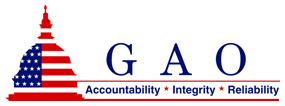Beginning on Jan. 1, 2013, the standard mileage rates for the use of a car (also vans, pickups or panel trucks) will be:
- 56.5 cents per mile for business miles driven
- 24 cents per mile driven for medical or moving purposes
- 14 cents per mile driven in service of charitable organizations
The standard mileage rate for business is based on an annual study of the fixed and variable costs of operating an automobile. The rate for medical and moving purposes is based on the variable costs.
Taxpayers always have the option of calculating the actual costs of using their vehicle rather than using the standard mileage rates.
A taxpayer may not use the business standard mileage rate for a vehicle after using any depreciation method under the Modified Accelerated Cost Recovery System (MACRS) or after claiming a Section 179 deduction for that vehicle. In addition, the business standard mileage rate cannot be used for more than four vehicles used simultaneously.
These and other requirements for a taxpayer to use a standard mileage rate to calculate the amount of a deductible business, moving, medical, or charitable expense are in Rev. Proc. 2010-51. Notice 2012-72 contains the standard mileage rates, the amount a taxpayer must use in calculating reductions to basis for depreciation taken under the business standard mileage rate, and the maximum standard automobile cost that a taxpayer may use in computing the allowance under a fixed and variable rate plan.

 The report was initiated at the request of Reps. John J. Duncan Jr. (R-Tenn.) and Frank LoBionda (R-N.J.) on behalf of the Geosynthetic Materials Association. GAO expanded the scope of the study to include all materials, including warm-mix asphalt (WMA), reclaimed and recycled materials, and stone-matrix asphalt, as well as pavement design and material testing practices. The GAO consulted with NAPA, officials from FHWA, and various states around the country.
The report was initiated at the request of Reps. John J. Duncan Jr. (R-Tenn.) and Frank LoBionda (R-N.J.) on behalf of the Geosynthetic Materials Association. GAO expanded the scope of the study to include all materials, including warm-mix asphalt (WMA), reclaimed and recycled materials, and stone-matrix asphalt, as well as pavement design and material testing practices. The GAO consulted with NAPA, officials from FHWA, and various states around the country.